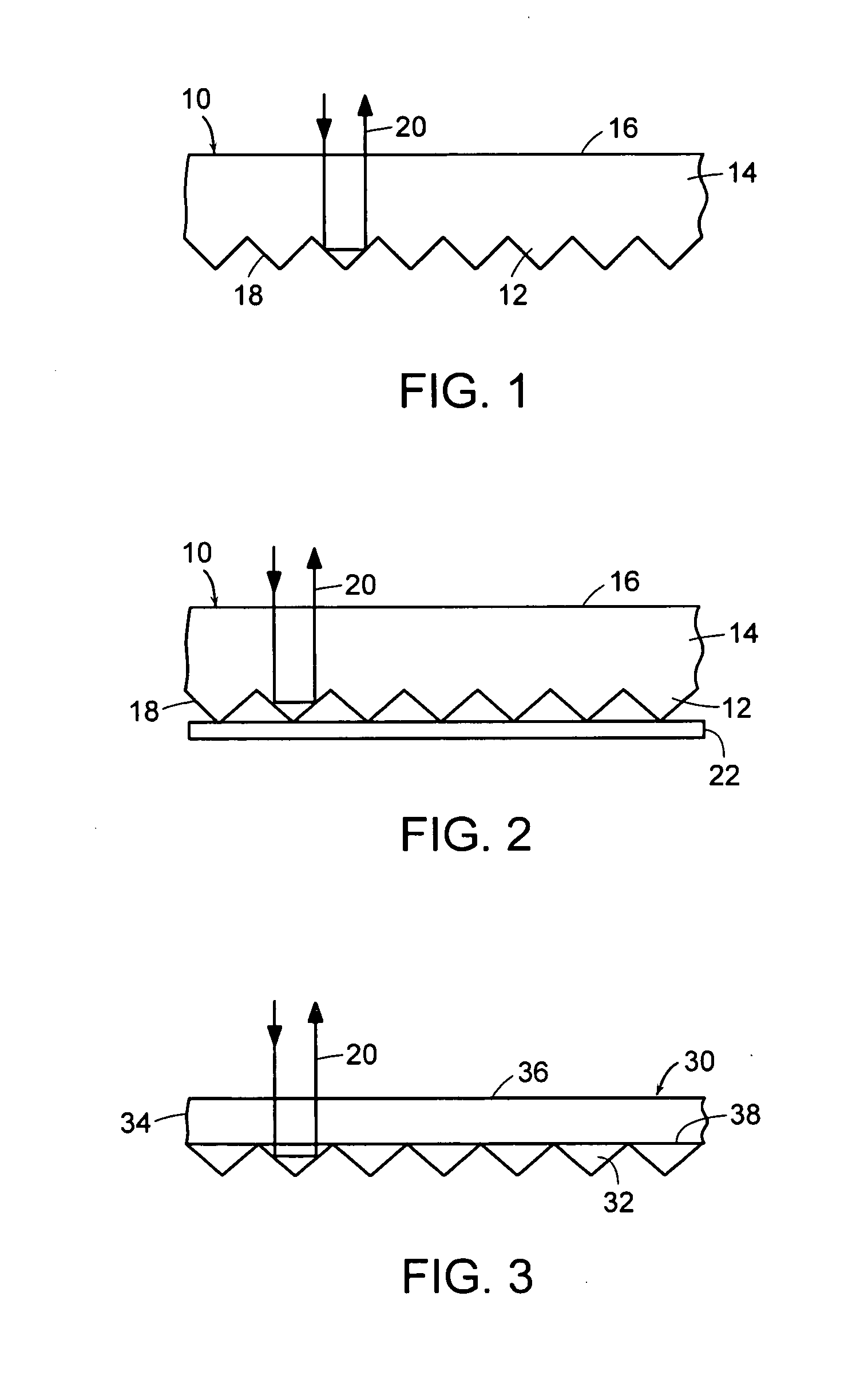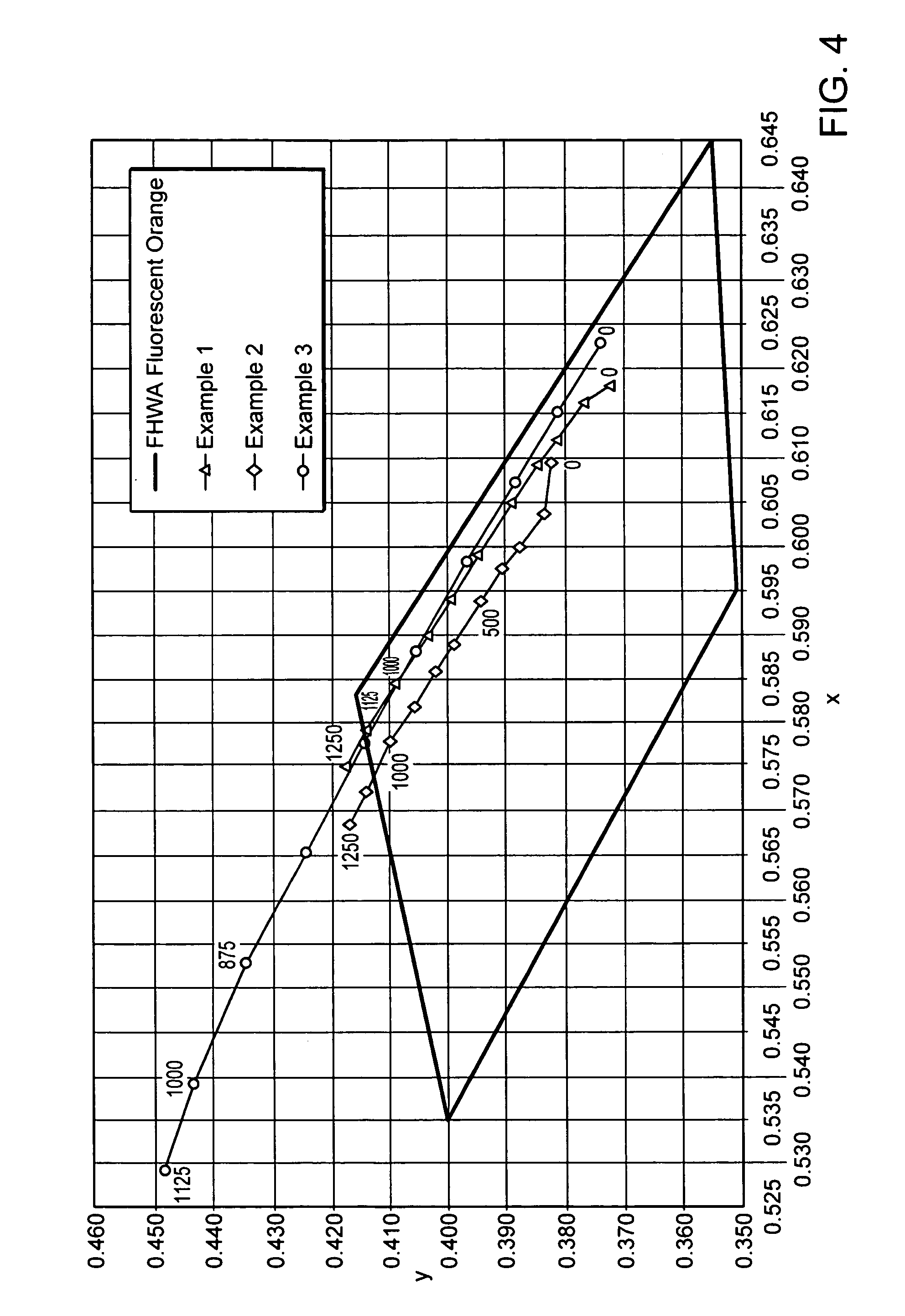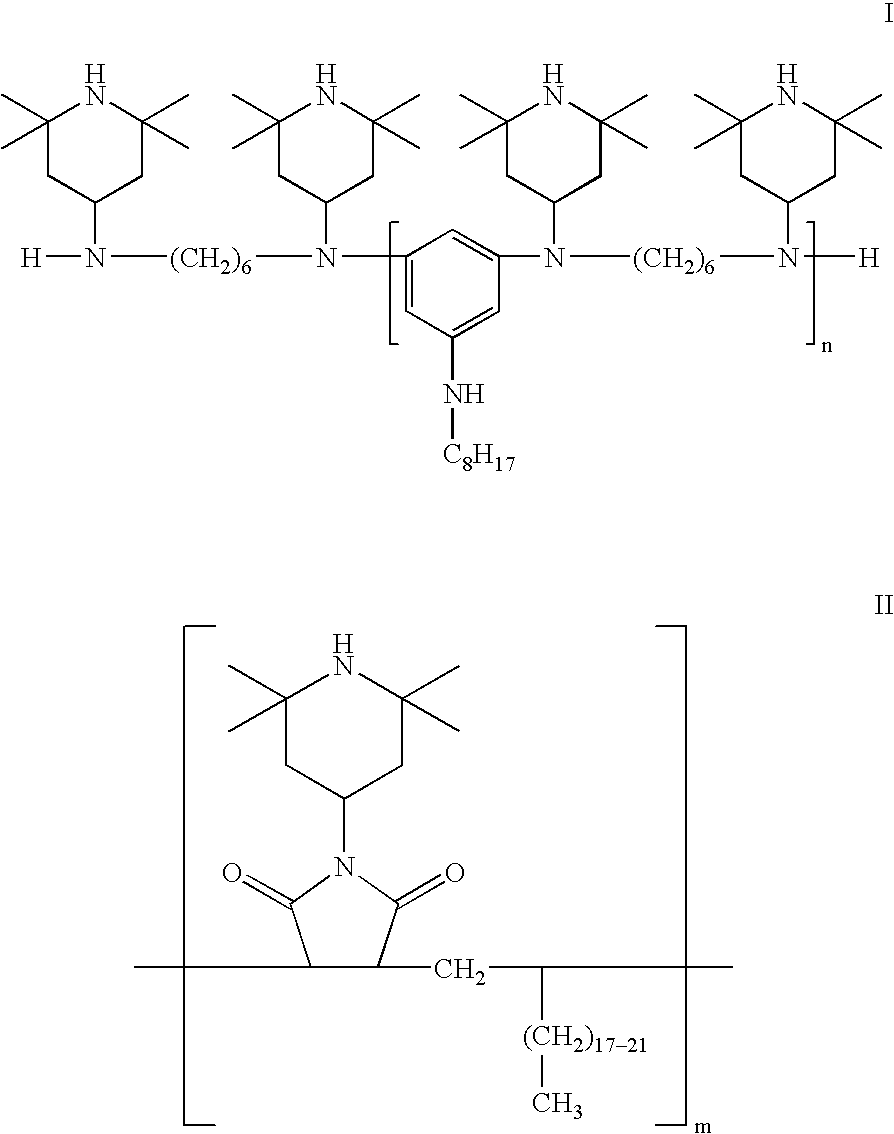Fade-resistant fluorescent retroreflective articles
a fluorescent retroreflective and anti-fading technology, applied in the field of anti-fading fluorescent retroreflective articles, can solve the problems of reducing the visibility of the article, forming surface haze, and colorants, i.e., dyes or pigments, and reducing the safety and performance of the article, so as to reduce the formation of undesirable surface haze and improve the safety and performan
- Summary
- Abstract
- Description
- Claims
- Application Information
AI Technical Summary
Benefits of technology
Problems solved by technology
Method used
Image
Examples
examples
[0057] The following Examples are presented in order to illustrate the invention, and are not intended to be limiting in any way.
[0058] A base polyvinyl chloride plastisol was made by addition of 63 parts of a plasticizer mixture to 100 parts of dry homopolymer polyvinyl chloride resin. The plasticizer mixture was a blend of diheptyl phthalate, dinonyl phthalate, and diundecyl phthalate such that the resulting specific gravity was about 0.971 and the dynamic viscosity was about 50 mPa.s (milliPascal-seconds) at 20° C.
[0059] To this 2-hydroxy-4-n-octoxybenzophenone was added as a UV absorber at 0.6% by total formula weight. This plastisol was then colored with C.I. Solvent Orange 63 and C.I. Solvent Orange 118 at a loading of 0.165% weight percent each versus total weight of homopolymer polyvinyl chloride resin. This mixture, designated as Base Resin A, was employed in the examples, e.g., the specific hindered amine of interest was added to Base Resin A as follows.
[0060] Examples ...
PUM
| Property | Measurement | Unit |
|---|---|---|
| molecular weight | aaaaa | aaaaa |
| weight fraction | aaaaa | aaaaa |
| weight fraction | aaaaa | aaaaa |
Abstract
Description
Claims
Application Information
 Login to View More
Login to View More - R&D
- Intellectual Property
- Life Sciences
- Materials
- Tech Scout
- Unparalleled Data Quality
- Higher Quality Content
- 60% Fewer Hallucinations
Browse by: Latest US Patents, China's latest patents, Technical Efficacy Thesaurus, Application Domain, Technology Topic, Popular Technical Reports.
© 2025 PatSnap. All rights reserved.Legal|Privacy policy|Modern Slavery Act Transparency Statement|Sitemap|About US| Contact US: help@patsnap.com



